Bespoke: Language Learning for Heritage Speakers
How might we help Chinese heritage speakers better understand their cultural backgrounds by improving their language skills? Heritage speakers are individuals that have learned a second language informally through exposure in a setting outside of a classroom (e.g., from family environments). Heritage speakers may speak their second language fluidly but lack confidence in some contexts owing to a lack of vocabulary. Mastery of the language to its full capacity could enable rewarding experiences and connections that would not otherwise be possible. In this project, I use design thinking to tackle difficulties with language learning using conventional methods.
Purpose
Personal Project
Type
Product Design
Timeline
3 months
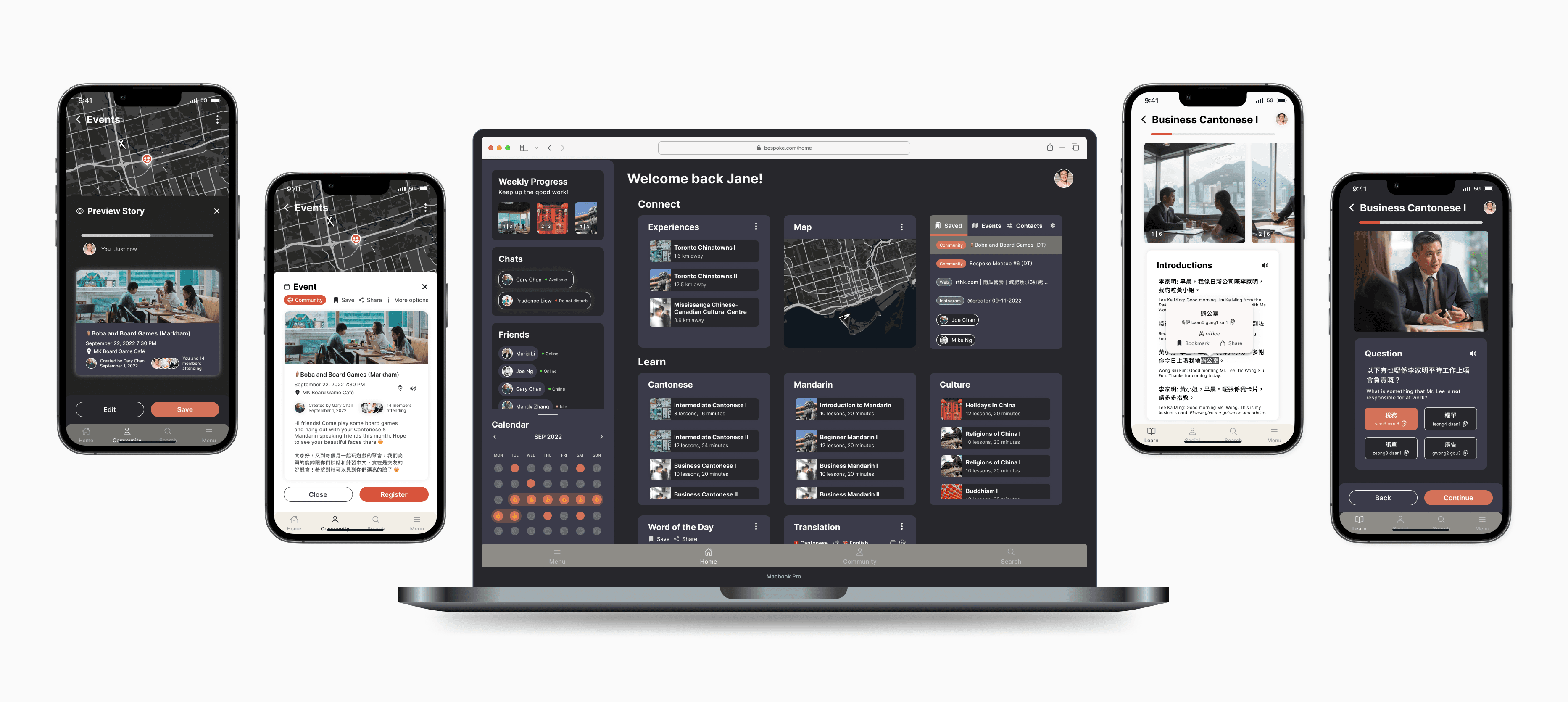
Design Process
Problem Space
Because many heritage speakers are conversationally fluent, they may find it difficult to improve their skills using conventional language learning materials. Bespoke addresses this need by providing a personalized learning experience and community grounded in a common language (Cantonese or Mandarin). Through an active reward system, users can engage in cultural experiences and apply their recently honed language skills.
User Research
I began to research Bespoke by interviewing heritage speakers of Cantonese and Mandarin whose primary language was English. I spoke with different age groups (age range 16-49) and degrees of second language exposure to capture a broad sample of potential users that could benefit from Bespoke. I quickly appreciated a common pain point — all interviewees I spoke with, even advanced speakers, reported that they struggled with finding incentives to improve. Moreover, many I spoke to found that language learning apps were siloed experiences. These potential users described difficulty in translating their newfound knowledge to practical, real-world application of the language.
To summarize the generative research I conducted during the exploratory phase of design, I defined four learner archetypes that accurately depict my user's motivations and what sets them apart from each other.
Family Learner: Individuals with some proficiency in a heritage language, typically from family. They seek to enhance their conversational and cultural understanding to connect deeper with their roots. They often find generic language solutions lacking in addressing their specific needs.
Business Learner: Professionals aiming to master a language for business communication. Their focus is on practical language skills, especially business terminology and etiquette. They require a time-efficient learning solution that aligns with their professional demands.
Cultural Learner: Enthusiasts diving into a language to embrace its associated culture, history, and traditions. They prioritize conversational skills and cultural insights, desiring a balance between language learning and cultural immersion.
Practical Learner: Individuals needing the language for daily tasks or jobs. They aim for swift proficiency in practical communication, often feeling overwhelmed by extensive cultural or historical content. Their ideal solution is direct and efficient language training.
I reasoned that Bespoke should empower learners with cultural insights and experiences. To promote a rewarding and social connection, a gamified learning experience and community learning the same language could be beneficial. I also found that learners studied language through multimedia content from social media and video-sharing sites. Bespoke should help users learn from different types of content, in addition to providing specific learning materials.
Gamification is the process of using game design concepts to engage users in ways that aren’t traditionally considered game environments.
-Ross Unger and Carolyn Chandler, A Project Guide to UX Design
Learning Experience Design
Because listening is an important tool for language acquisition, I ideated learning content in the form of character dialogues and storyboards. In addition to audio cues, learners would also be encouraged to provide answers by speech. Evaluation of answer submission is immediate and gamified. Learners acquire reward points, with more points earned from faster responses. Updates on learner progress are provided on a regular basis and on the home screen.
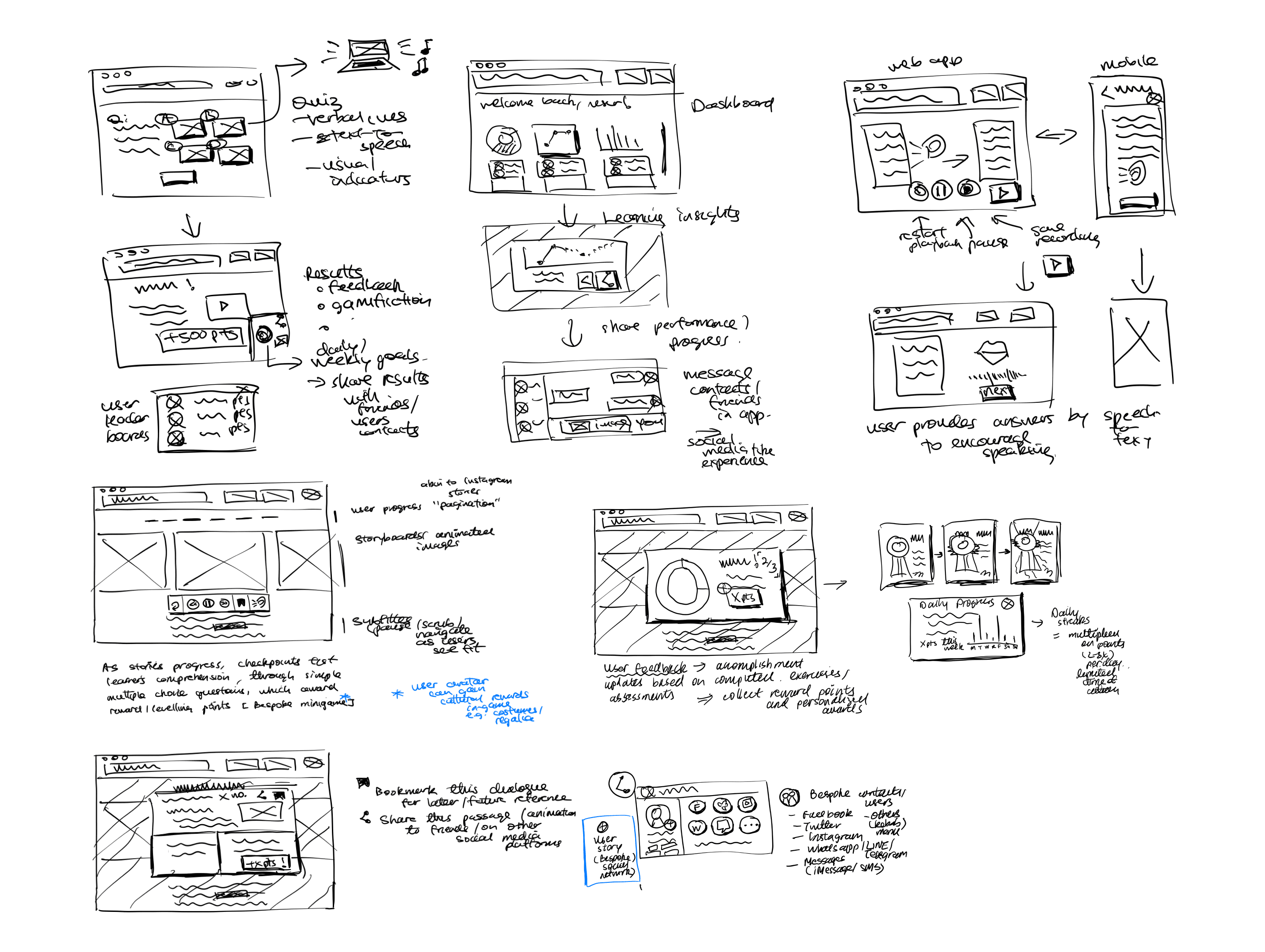
Ideation of gamified learning experiences in Bespoke
As learners complete exercises, they are encouraged to share content, achievements, and rewards with other Bespoke users. A content creation feature allows learners to generate stories from language learning content (text, audio, and video). This could enhance user engagement and community building. To support these features, I ideated messaging and social media functions for Bespoke.
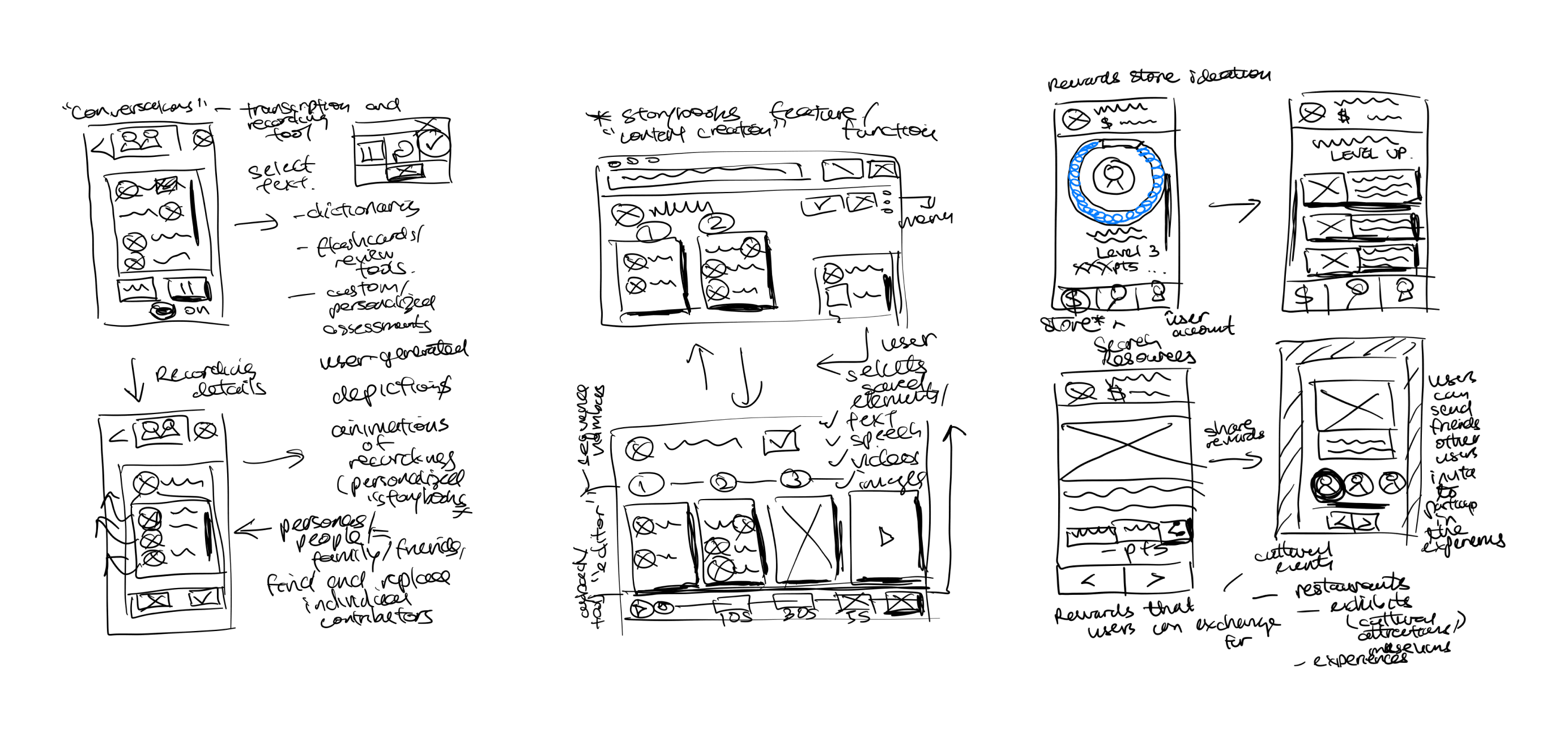
Ideation of social learning experiences and reward systems in Bespoke
Interaction & UI Design
Next, I began to ideate specific solutions for my learners. My first learner completes a storyboard learning exercise and shares content with other users. My second learner redeems reward points and registers for an in-person social experience in their community. My third learner uses a screen reader function to interpret and share web content. Exploring these task flows in further detail, I iterated on wireframes and prototypes of the mobile interface.
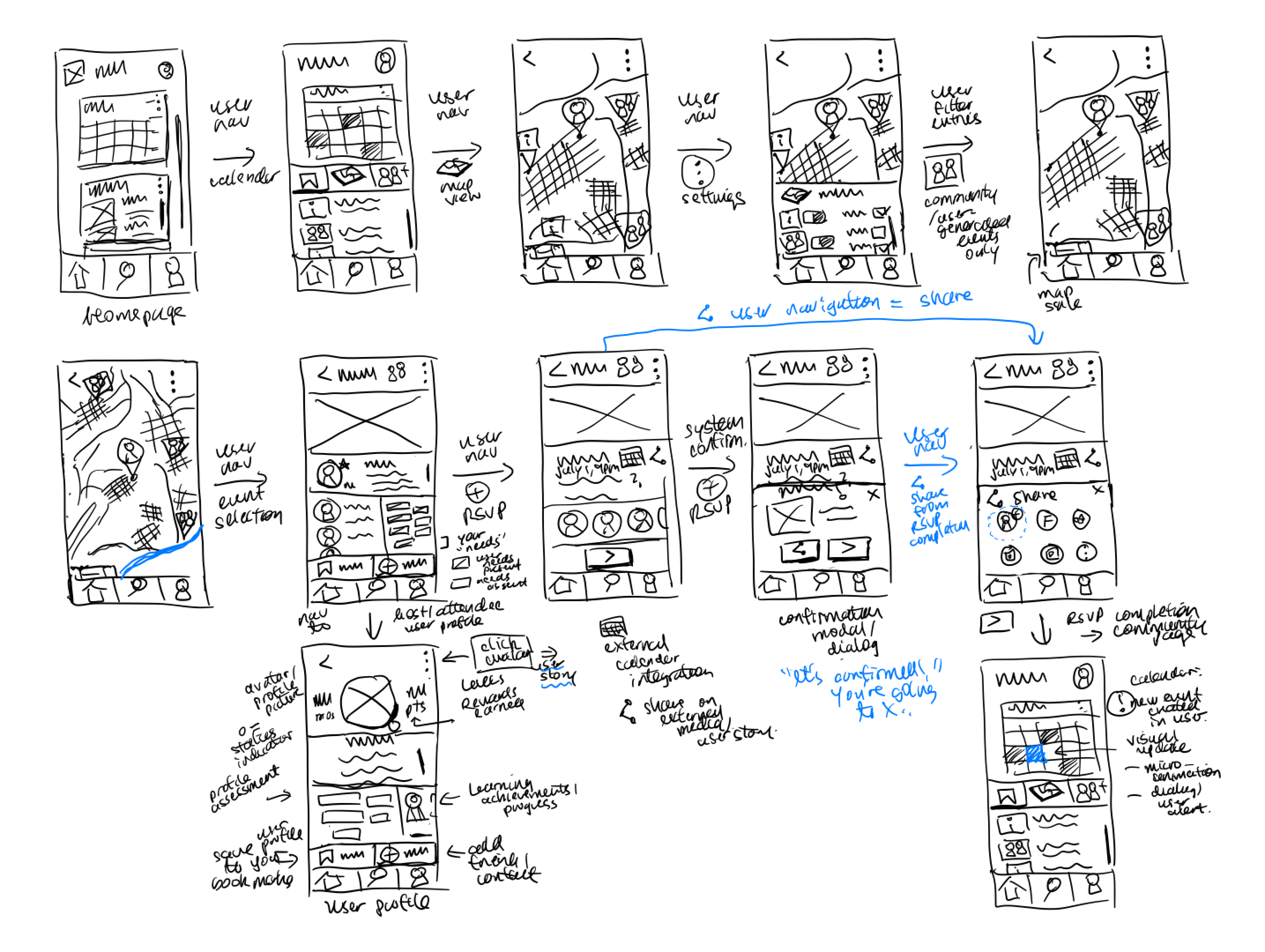
Wireframes of how a learner might redeem rewards to register for an in-person community event
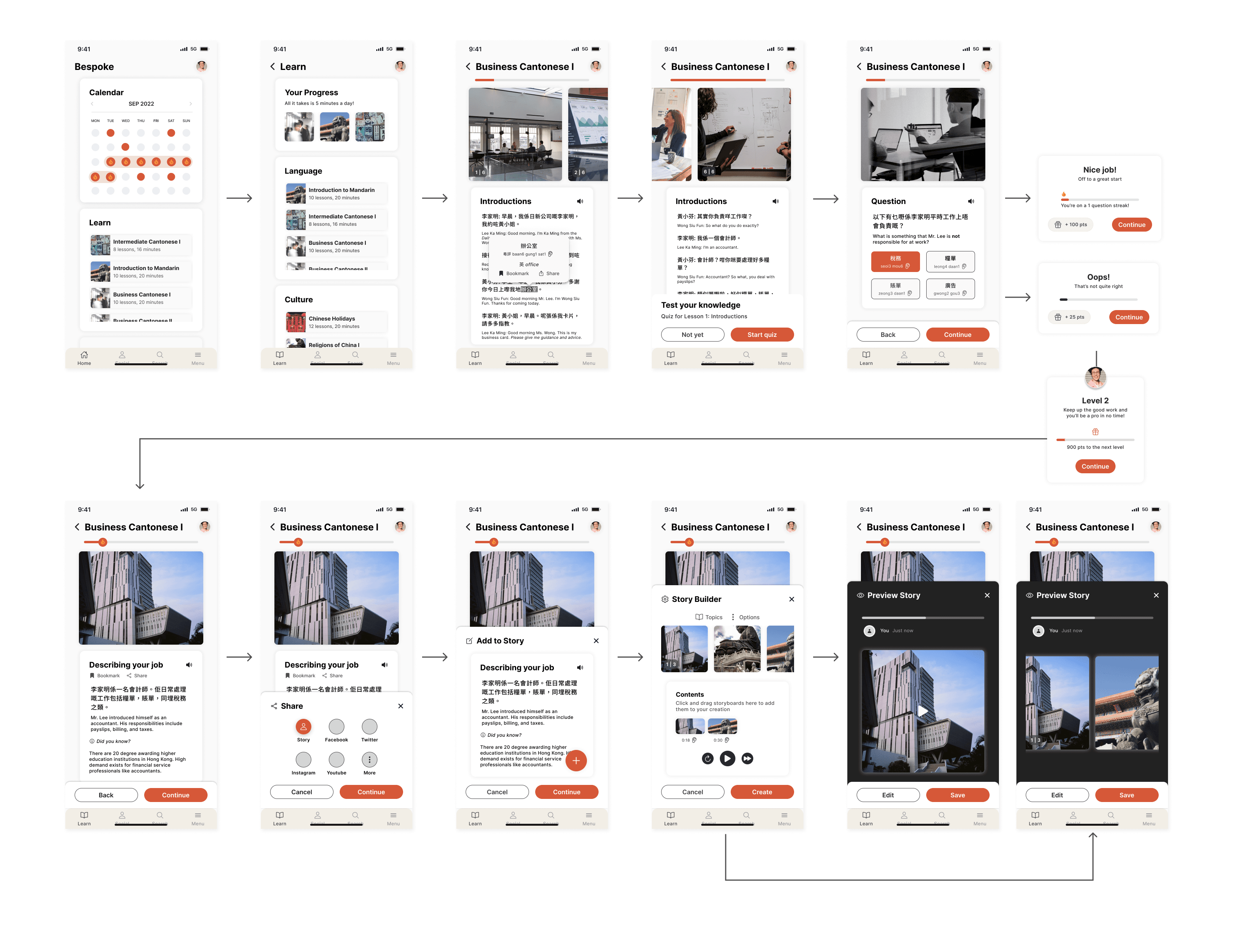
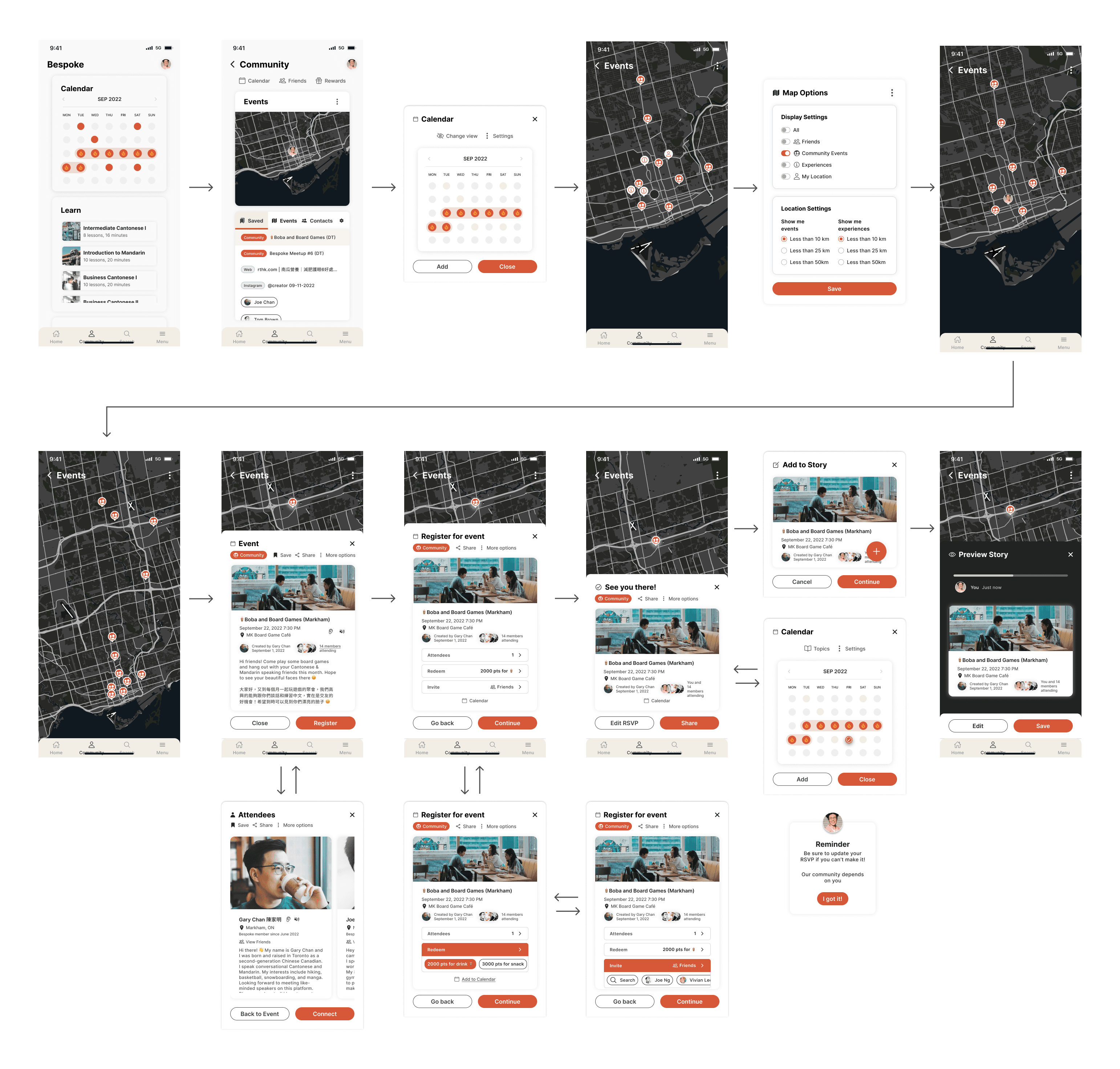
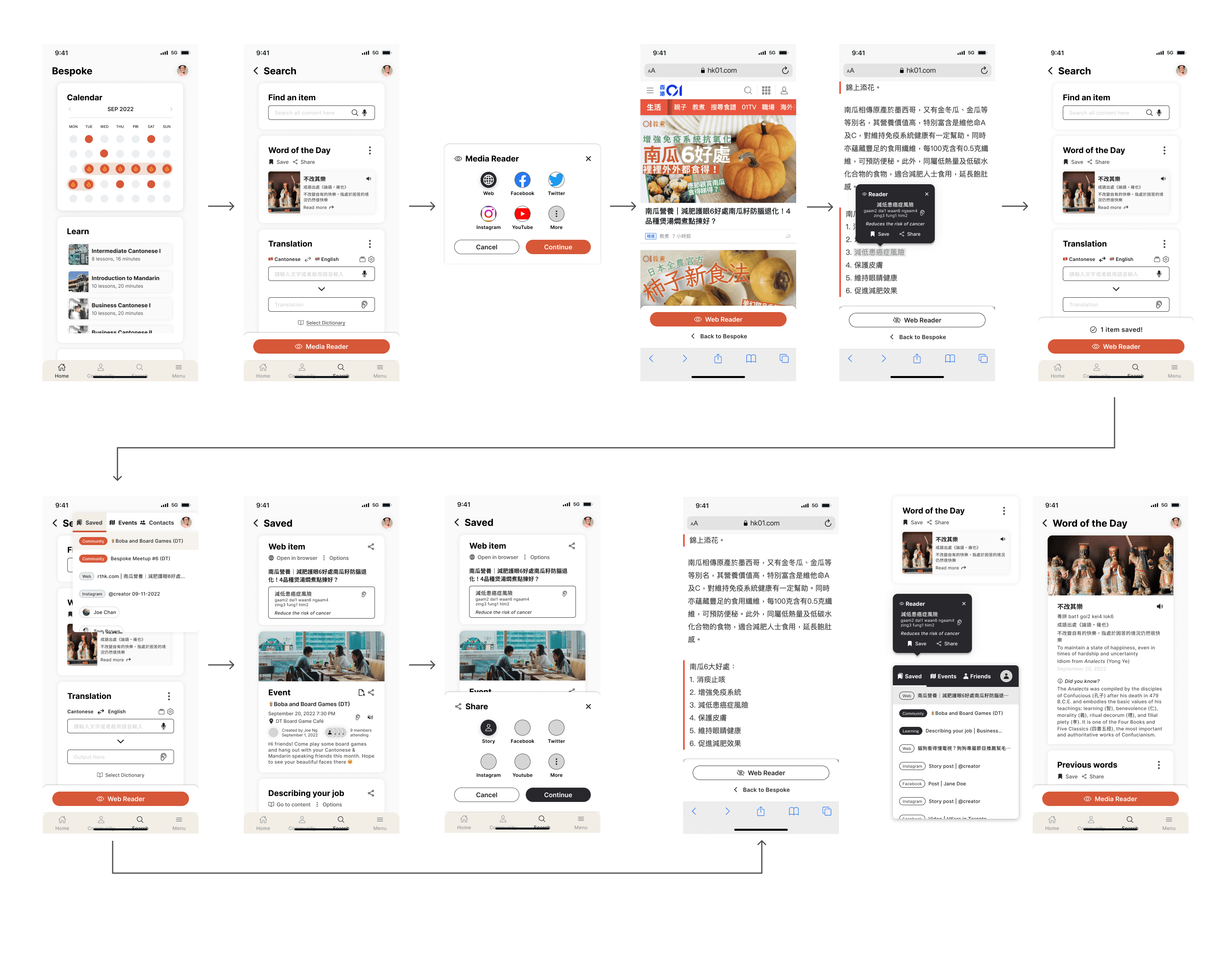
Design Outcome
Designing for Multiple Use Cases
To improve the learning experience and further engage my users, I am designing and implementing micro-animations in my prototypes. I believe that the successful implementation of these features can reinforce gamification and provide useful feedback to learners. After I develop and test mobile prototypes, I would like to design for use cases on larger devices. In this regard, responsive design principles for a web-based user interface would be particularly important to apply. I will use Figma to prototype and React to create user experiences guided by further rounds of research and testing. In doing so, I will be able to target a larger subset of learners that could benefit from Bespoke.
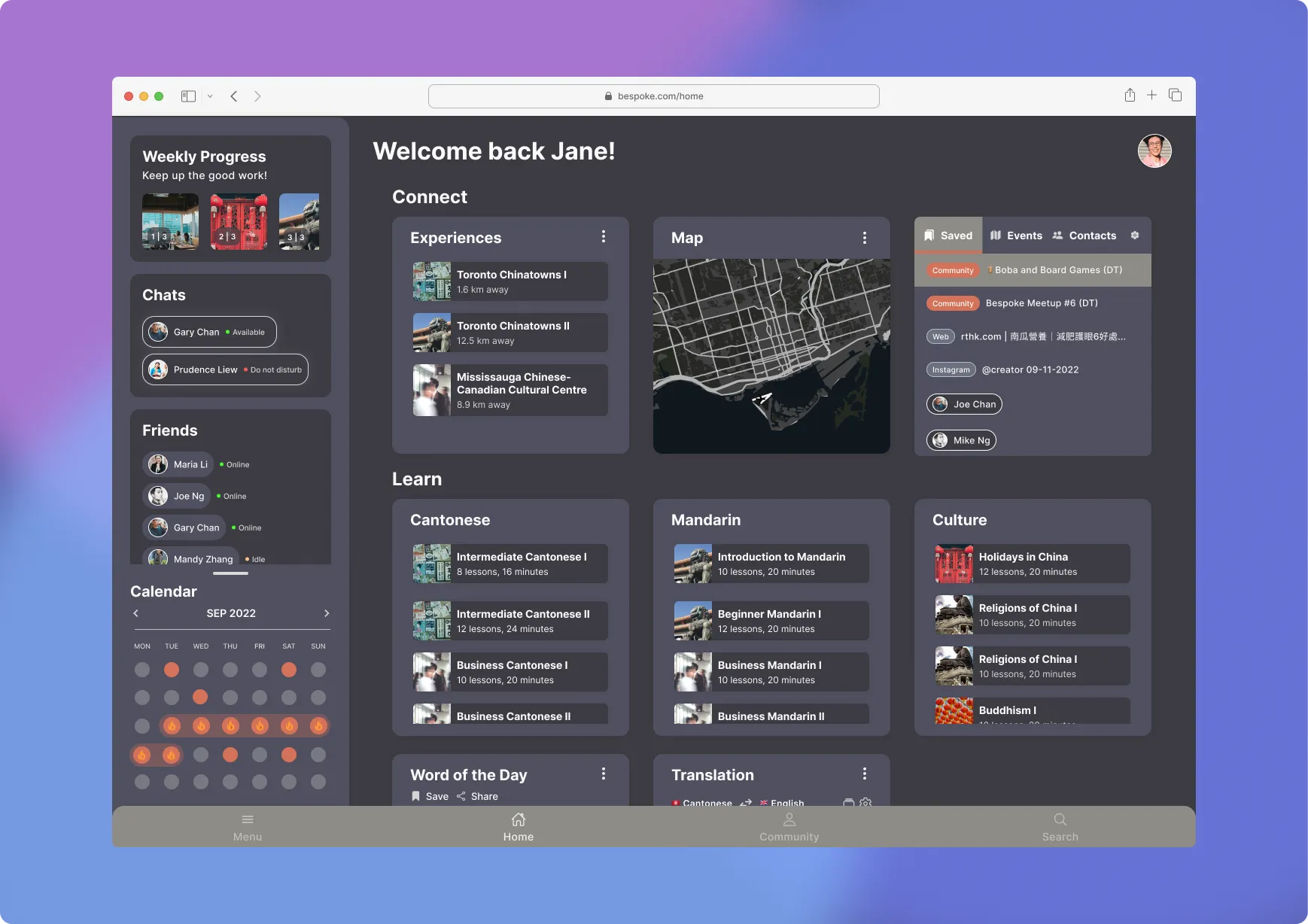
Mockup of the Bespoke Home screen on a desktop web browser
Research Defines Success
One takeaway from this project I will apply in my future UX research projects is being cognizant of user archetypes to assist in ideating solutions. One way to accomplish this is to pursue multiple lines of generative research in addition to user interviews. Surveys could provide quantitative data to group users based on their existing knowledge of the target language. When formulating north star metrics for success, it is important to gain insight from a common ground shared by all my users. For example, more confident heritage speakers might initiate Community events at a significantly greater rate than learners that use Bespoke primarily to improve their mastery of language. Therefore, participation in user-generated events would be a useful metric linking the learning and social experiences of this product.